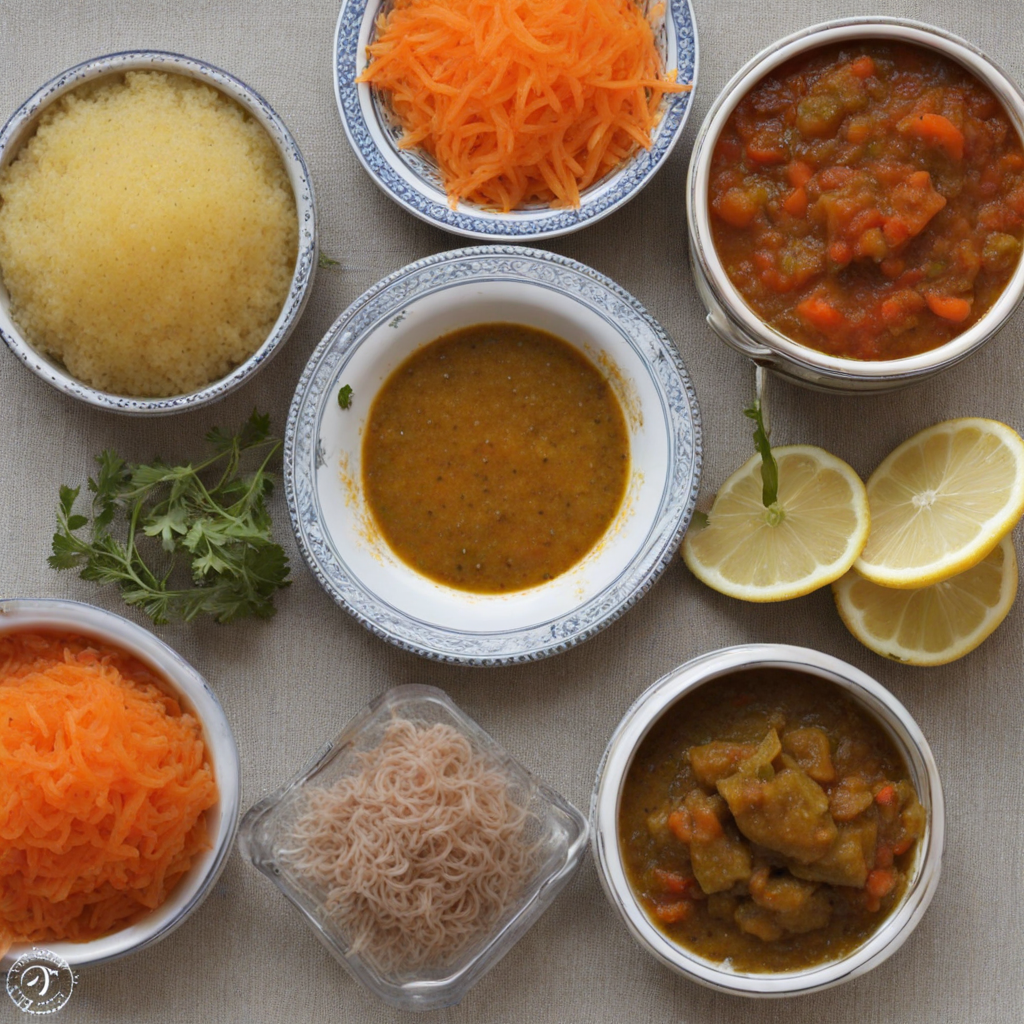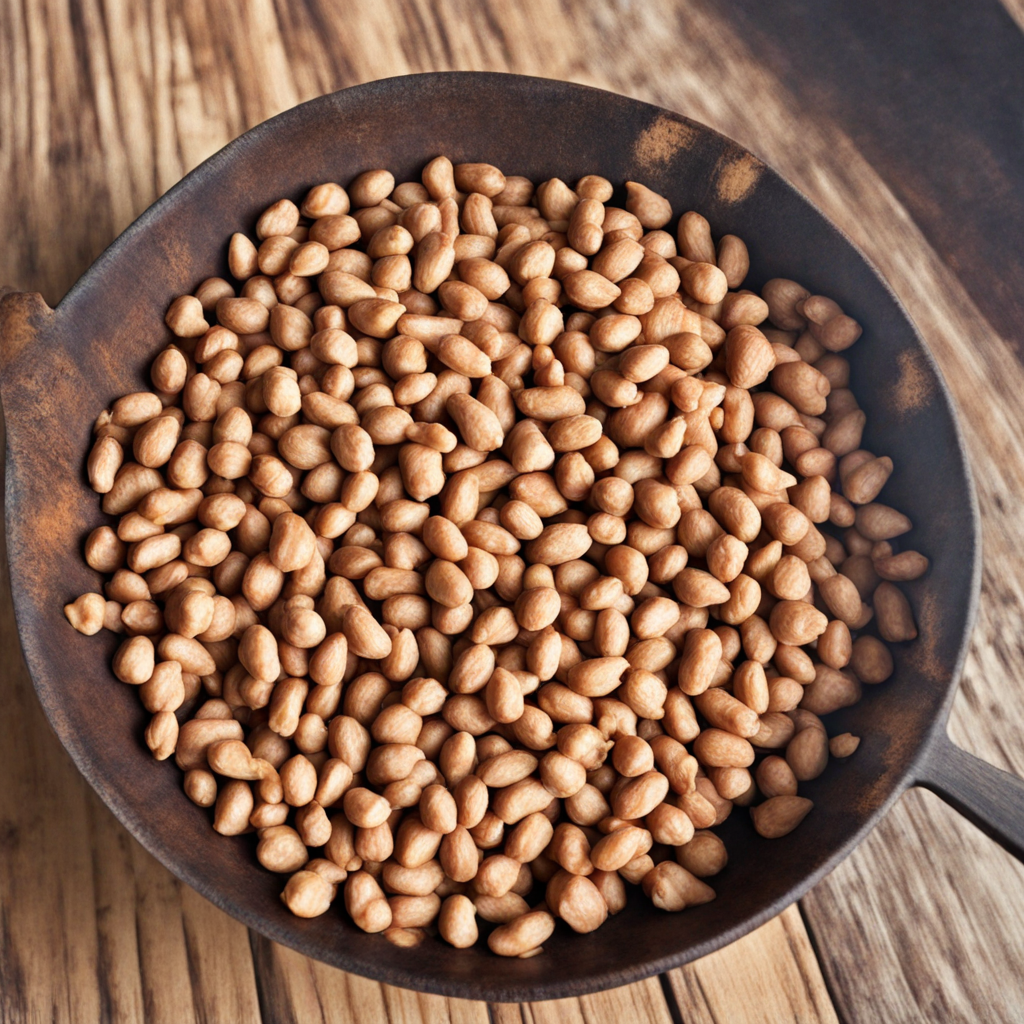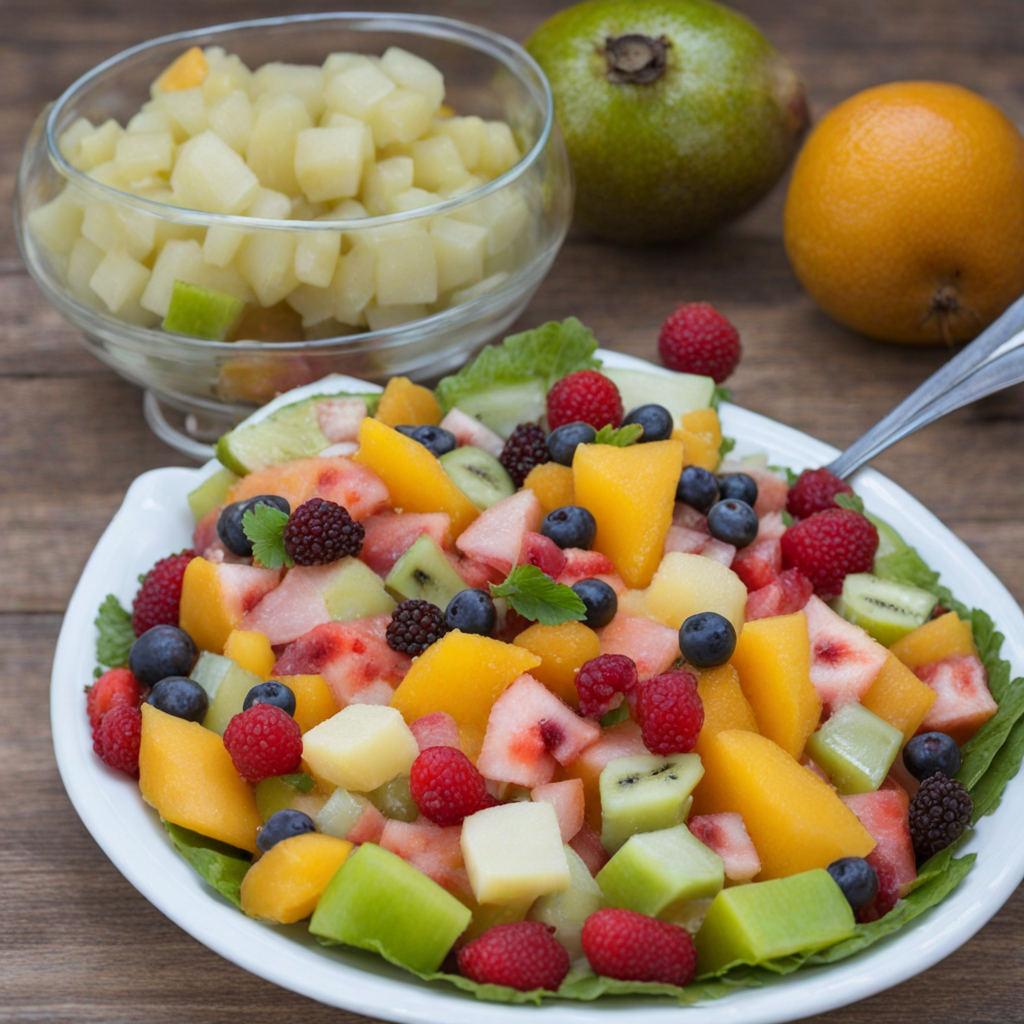Lasary
Lasary is a traditional Malagasy dish that epitomizes the vibrant culinary landscape of Madagascar. Often served as a side dish, it showcases the island's rich agricultural bounty and reflects the diverse influences that have shaped its cuisine over centuries. The term "lasary" refers primarily to a salad or side dish that can be made with a variety of ingredients, but it is most commonly associated with pickled or marinated vegetables. Historically, lasary has its roots in the agricultural practices of Madagascar, where fresh vegetables are abundant due to the island's favorable climate. The dish has evolved over time, influenced by various cultures, including French, Indian, and African, which have all contributed to the island's culinary tapestry. This multicultural aspect is evident in the range of flavors and ingredients used in lasary, making it a versatile and adaptable dish that can be found at family gatherings, street food stalls, and fine dining establishments alike. The flavor profile of lasary is a delightful combination of tanginess, crunch, and freshness. The vegetables are typically pickled, providing a sharp contrast to the otherwise mild base of the dish. Commonly used vegetables include carrots, green beans, radishes, and cabbages, each lending its unique texture and flavor. The pickling process often incorporates vinegar, which adds acidity, while spices such as garlic, ginger, and chili provide a kick that elevates the dish. The balance of sour, spicy, and fresh flavors makes lasary a refreshing accompaniment to hearty
How It Became This Dish
The History of Lasary: A Culinary Gem from Madagascar Lasary, a beloved dish from Madagascar, is much more than just a culinary delight; it is a reflection of the island's rich cultural tapestry, its diverse influences, and the resilience of its people. This vibrant and tangy salad, often made with a variety of vegetables, is an integral part of Malagasy cuisine, showcasing the island's agricultural bounty and its people's connection to the land. #### Origins of Lasary Lasary's origins can be traced back to the diverse influences that have shaped Madagascar over centuries. The island, located off the southeastern coast of Africa, is a melting pot of cultures, having been settled by waves of Austronesian peoples from Southeast Asia, African tribes, Arab traders, and later European colonizers. This unique blend of cultural influences has resulted in a culinary landscape that is distinctively Malagasy. The term “lasary” itself is derived from the French word "salade," reflecting the colonial influence on Madagascar's cuisine. However, the essence of lasary goes beyond mere translation; it embodies the local ingredients and traditional preparation methods that have been passed down through generations. The dish typically consists of fresh vegetables such as carrots, green beans, tomatoes, and sometimes even fruits like mango, which are often pickled or marinated in a tangy mixture of vinegar, oil, and spices. The use of locally grown produce highlights the island's agricultural heritage and the importance of seasonal ingredients in Malagasy cooking. #### Cultural Significance In Madagascar, food is not merely sustenance; it is a vital aspect of social life, identity, and cultural practices. Lasary holds a special place in this cultural mosaic. It is often served as a side dish during communal meals, family gatherings, and celebrations. The preparation and sharing of lasary symbolize hospitality and community spirit, reinforcing social bonds among families and friends. Moreover, lasary is frequently included in the traditional Malagasy feast known as "vary amin'anana," which consists of rice served with a variety of dishes, including meat, fish, and vegetables. The inclusion of lasary in such meals signifies its importance as a contrast to the heavier protein dishes, providing a refreshing balance with its acidity and crunch. This reflects the Malagasy philosophy of harmony in food, where flavors, colors, and textures are thoughtfully combined to create a satisfying dining experience. Lasary also plays a role in the Malagasy understanding of health and wellness. The emphasis on fresh vegetables in this dish is aligned with traditional beliefs regarding nutrition and the body's well-being. Many Malagasy people view the consumption of raw vegetables as beneficial, providing essential vitamins and minerals necessary for maintaining health. As such, lasary can be seen not only as a culinary tradition but also as a reflection of the Malagasy people's holistic approach to food and health. #### Development Over Time As Madagascar has evolved, so too has the dish of lasary. While the fundamental components remain rooted in tradition, contemporary interpretations of lasary have emerged, fueled by globalization and the influence of international cuisine. Urban centers like Antananarivo have seen the introduction of new ingredients and flavors, blending traditional Malagasy cooking with global culinary trends. The globalization of food culture has led to the incorporation of various international elements into lasary. For example, some modern recipes may include ingredients like avocado or even nuts, which were not traditionally used in the dish. Additionally, the rise of health-conscious eating has prompted many to experiment with less oil or alternative dressings, making lasary more adaptable to contemporary dietary preferences. The increasing popularity of Malagasy cuisine on the international stage has also contributed to the evolution of lasary. As more people become aware of Madagascar’s unique culinary offerings, chefs and home cooks alike are exploring creative adaptations of traditional recipes. This has resulted in a renewed interest in the dish, allowing it to transcend its traditional boundaries and reach a wider audience. Food festivals and cultural events celebrating Malagasy heritage often feature lasary, showcasing its versatility and appeal. #### Lasary in the Modern Culinary Landscape In recent years, lasary has gained attention beyond Madagascar, particularly in culinary circles and among food enthusiasts eager to explore global flavors. The dish has found its way into restaurants and food blogs, where chefs experiment with its ingredients and presentation. This newfound popularity highlights the growing appreciation for Madagascar's culinary heritage and the richness of its traditional dishes. Moreover, lasary has become a symbol of the island’s agricultural diversity, as it can be made with a variety of vegetables depending on the season and local availability. This adaptability not only speaks to the resourcefulness of Malagasy cooks but also emphasizes the importance of sustainable eating practices. By using locally sourced ingredients, lasary embodies the principles of farm-to-table dining, aligning with contemporary movements towards environmental consciousness and food sustainability. #### Conclusion Lasary is more than just a dish; it is a celebration of Madagascar’s vibrant culture, history, and agricultural heritage. From its humble beginnings, shaped by diverse influences, to its contemporary interpretations that embrace global culinary trends, lasary has remained a cherished part of Malagasy cuisine. As it continues to evolve and gain recognition on the international stage, lasary serves as a delicious reminder of the island's rich history and the enduring connection between food, culture, and community. Whether enjoyed at a family gathering, a festive celebration, or in a modern restaurant setting, lasary encapsulates the essence of Madagascar—its flavors, its people, and its traditions. As we savor this dish, we are not just tasting a salad; we are experiencing a story woven through time, a testament to the resilience and creativity of the Malagasy people.
You may like
Discover local flavors from Madagascar







